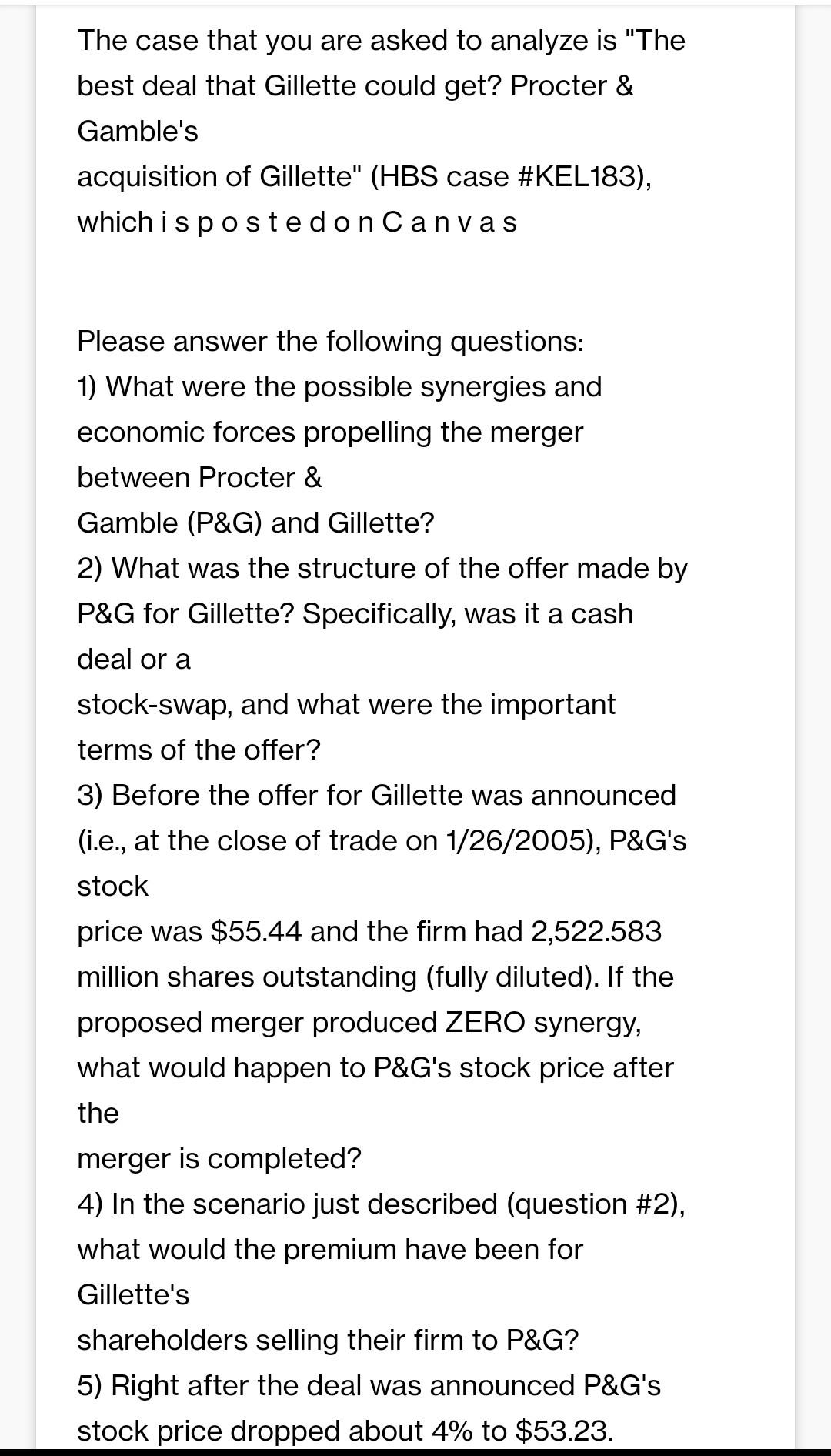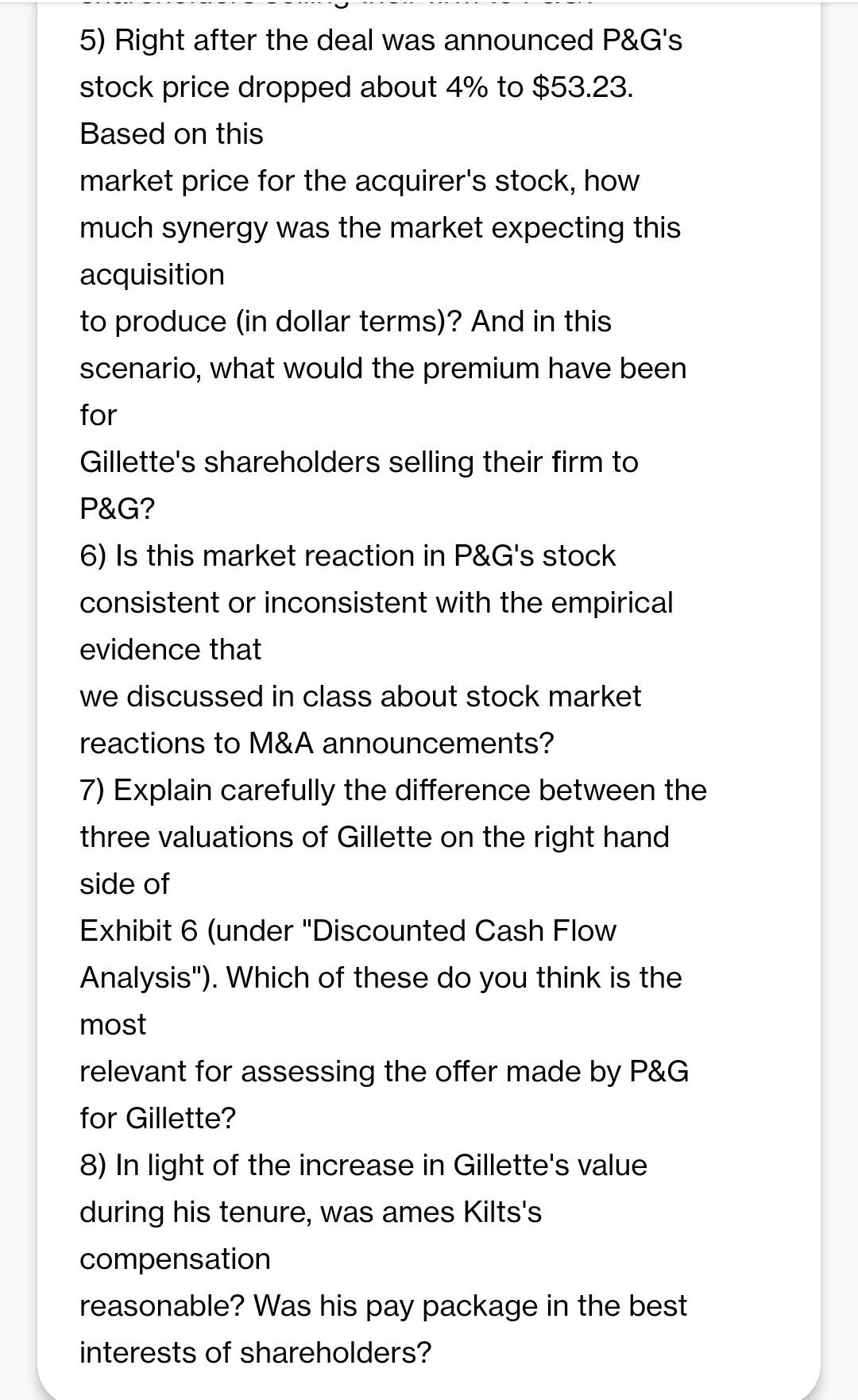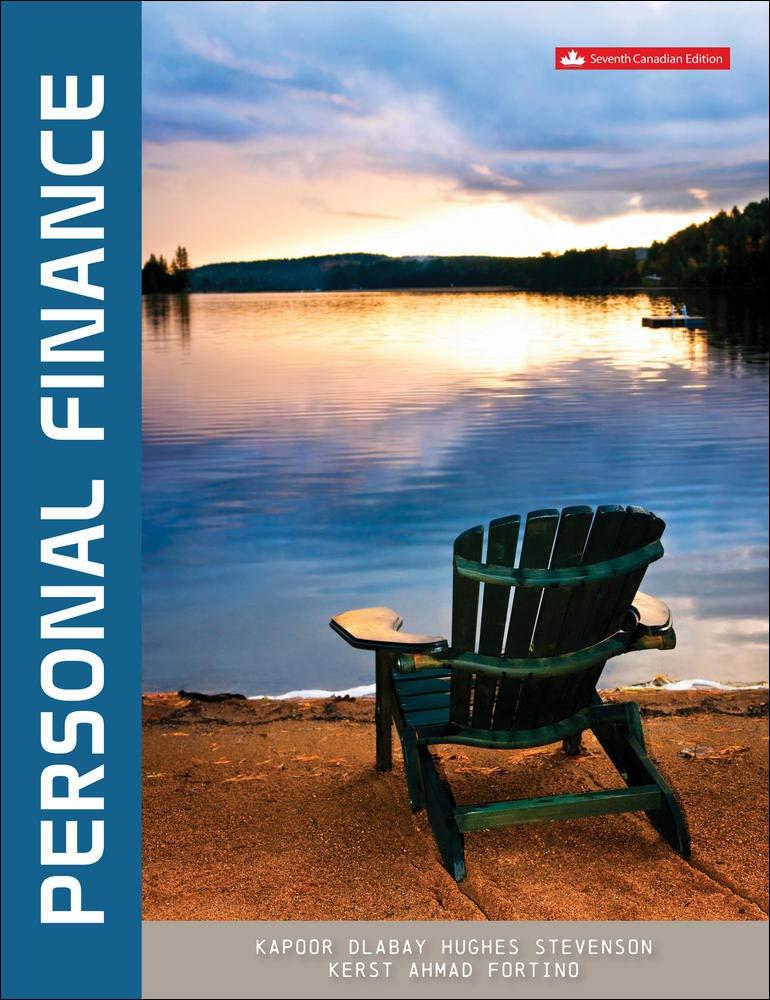Answered step by step
Verified Expert Solution
Question
1 Approved Answer
please help The case that you are asked to analyze is The best deal that Gillette could get? Procter & Gamble's acquisition of Gillette (HBS


please help
The case that you are asked to analyze is "The best deal that Gillette could get? Procter & Gamble's acquisition of Gillette" (HBS case #KEL183), which is posted on Canvas Please answer the following questions: 1) What were the possible synergies and economic forces propelling the merger between Procter & Gamble (P&G) and Gillette? 2) What was the structure of the offer made by P&G for Gillette? Specifically, was it a cash deal or a stock-swap, and what were the important terms of the offer? 3) Before the offer for Gillette was announced (i.e., at the close of trade on 1/26/2005), P&G's stock price was $55.44 and the firm had 2,522.583 million shares outstanding (fully diluted). If the proposed merger produced ZERO synergy, what would happen to P&G's stock price after the merger is completed? 4) In the scenario just described (question #2), what would the premium have been for Gillette's shareholders selling their firm to P&G? 5) Right after the deal was announced P&G's stock price dropped about 4% to $53.23. 5) Right after the deal was announced P&G's stock price dropped about 4% to $53.23. Based on this market price for the acquirer's stock, how much synergy was the market expecting this acquisition to produce (in dollar terms)? And in this scenario, what would the premium have been for Gillette's shareholders selling their firm to P&G? 6) Is this market reaction in P&G's stock consistent or inconsistent with the empirical evidence that we discussed in class about stock market reactions to M&A announcements? 7) Explain carefully the difference between the three valuations of Gillette on the right hand side of Exhibit 6 (under "Discounted Cash Flow Analysis"). Which of these do you think is the most relevant for assessing the offer made by P&G for Gillette? 8) In light of the increase in Gillette's value during his tenure, was ames Kilts's compensation reasonable? Was his pay package in the best interests of shareholders? The case that you are asked to analyze is "The best deal that Gillette could get? Procter & Gamble's acquisition of Gillette" (HBS case #KEL183), which is posted on Canvas Please answer the following questions: 1) What were the possible synergies and economic forces propelling the merger between Procter & Gamble (P&G) and Gillette? 2) What was the structure of the offer made by P&G for Gillette? Specifically, was it a cash deal or a stock-swap, and what were the important terms of the offer? 3) Before the offer for Gillette was announced (i.e., at the close of trade on 1/26/2005), P&G's stock price was $55.44 and the firm had 2,522.583 million shares outstanding (fully diluted). If the proposed merger produced ZERO synergy, what would happen to P&G's stock price after the merger is completed? 4) In the scenario just described (question #2), what would the premium have been for Gillette's shareholders selling their firm to P&G? 5) Right after the deal was announced P&G's stock price dropped about 4% to $53.23. 5) Right after the deal was announced P&G's stock price dropped about 4% to $53.23. Based on this market price for the acquirer's stock, how much synergy was the market expecting this acquisition to produce (in dollar terms)? And in this scenario, what would the premium have been for Gillette's shareholders selling their firm to P&G? 6) Is this market reaction in P&G's stock consistent or inconsistent with the empirical evidence that we discussed in class about stock market reactions to M&A announcements? 7) Explain carefully the difference between the three valuations of Gillette on the right hand side of Exhibit 6 (under "Discounted Cash Flow Analysis"). Which of these do you think is the most relevant for assessing the offer made by P&G for Gillette? 8) In light of the increase in Gillette's value during his tenure, was ames Kilts's compensation reasonable? Was his pay package in the best interests of shareholdersStep by Step Solution
There are 3 Steps involved in it
Step: 1

Get Instant Access to Expert-Tailored Solutions
See step-by-step solutions with expert insights and AI powered tools for academic success
Step: 2

Step: 3

Ace Your Homework with AI
Get the answers you need in no time with our AI-driven, step-by-step assistance
Get Started


